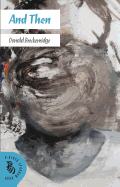
Donald Breckenridge (This Young Girl Passing) weaves a short but extraordinary mosaic in his novel And Then.
Fiction editor of the Brooklyn Rail, Breckenridge is no stranger to experimental literary forms and employs a montage technique--juxtaposing several narratives and mise-en-scène details--not unlike that of William Burroughs. But where postmodernists wander into fabulist obscurity, Breckenridge grounds his novel in a convincing realism; his characters are fully realized human beings. There's the obsessive student trying to piece together the love life of his professor while housesitting, and the mysterious disappearance of a young, aspiring woman who gets involved with drugs. And then there's Breckenridge himself, blending the multiple stories into his own account of his father's death. The arcs occur in and around New York City, which, in its vicissitudes, becomes a character in itself.
Breckenridge's most inventive technique--likely to stick as his auteur signature--is his irregular splicing of dialogue and narrative detail: " 'Necessity is blind until it becomes conscious,' John turned to Suzanne, 'and freedom is the consciousness of necessity,' with an expectant look, 'Do you know who said that?' " By re-constituting the flow of speech and exposition, Breckenridge achieves an uncanny simultaneity of exterior and interior events that challenges standard portraiture. As interesting and stimulating as the technique is, however, it's not as powerful as the author's simple, declarative sentences that linger with subtle imagery: "Filmy water vibrated in the sink before being sucked down the drain." The cumulative effect of And Then is surprisingly potent, like waking from a sad and unshakable dream. --Scott Neuffer, freelance journalist, poet and fiction author

